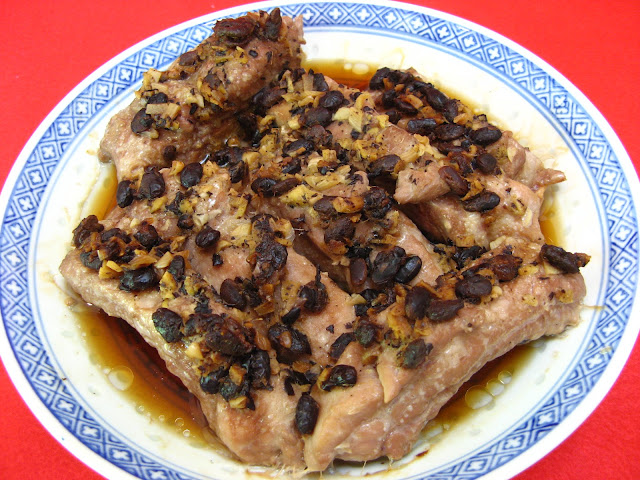This recipe was updated on 08 Nov 2015. Some instructions
and ingredient quantities were changed, and metric measurements added.
This recipe is a classic Cantonese-style steamed pork dish
using pork ribs and black beans, with a notable twist to the recipe – using the
whole pork baby back rib instead of using cut 1- (2.5 cm.) to 2-inch (5 cm.) rib
pieces. Marinating the ribs is also not usually done in the classic recipe, so
feel free to omit this step if you’re in a hurry to make and eat this dish!
The number of pork ribs used in this recipe is governed by the
size of the plate than can be placed into the steamer. You want to have one
layer of individual ribs in the plate with the topping. The baby back rib is
the right size to fit into the steamer plate for cooking and for eating. You
can of course use cut ribs (just pile them in the plate!) in this recipe
instead of whole baby back ribs, but normal pork ribs are not recommended since
they would be too big to fit into the steaming plate and to eat.
For this recipe, ½ of the baby back pork rib rack was used, about
7 ribs. The whole rack was cut into individual ribs, marinated, and then used
in two recipes. The first being this recipe and the other is Pork
Baby Back Ribs with Fermented Bean Curd (腐乳排骨,
Fu6 Jyu5 Paai4 Gwat1). Both
recipes are classic Cantonese steamed dishes except for the use of the whole
baby back rib.
Enjoy!






